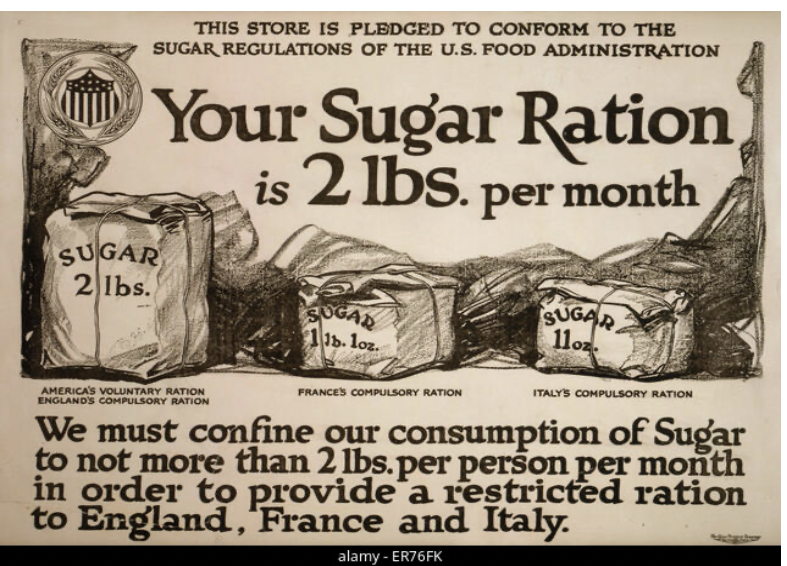For 13 years during and after World War II the British government rationed sugar allowing only 8 ounces per week per person. This prolonged rationing provided scientist the perfect opportunity to study how sugar can affect a developing body. Using the medical database U.K. BioBank they were able to compare disease incidence in about 60,000 people born in the years before or after sugar rationing ended in September 1953. Thus for the first 1,000 days of life they could see how sugar restriction affected ones long-term health.
They found that infants conceived in the years during sugar rationing had a 35% lower risk of diabetes and a 20% lower risk of hypertension in their 50s and 60s compared with those conceived after rationing ended. The longer a person lived under rationing, the greater the benefit they saw. But the strongest effects came while in utero and past the first six months of life, when babies begin eating solid foods. Other studies have shown that excessive sugar consumption in the developmental years contributes to impaired learning, mood swings and memory later in life by effecting the brain’s hippocampus. An added benefit found in a separate study showed that those exposed to rationing consumed less daily added sugar as adults than those who weren’t.
It probably wouldn’t surprise you that today the average American consumes 48 ounces of sugar per week. A far greater amount than the 8 ounces allowed per week during WWII.
Given the nutritional environment we live in, cutting back on sugar consumption is challenging today. For example, Kelloggs spends $393 million a year advertising its cereals most of which are laden with sugar. This compares to the paltry $1 million that the National Cancer Institute spends in a year promoting fruits and vegetables. In addition, grocery stores, pharmacies and convenience stores display sugary treats in places to catch your attention. Although it can be challenging to minimize our sugar consumption it will result in better emotional and physical health.

